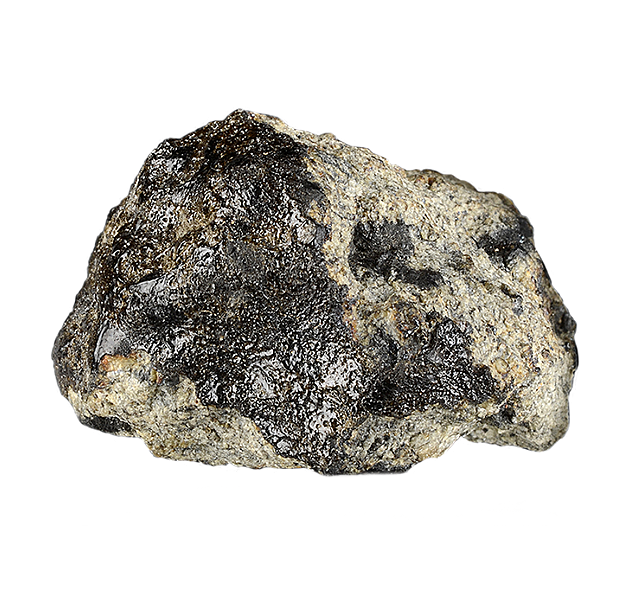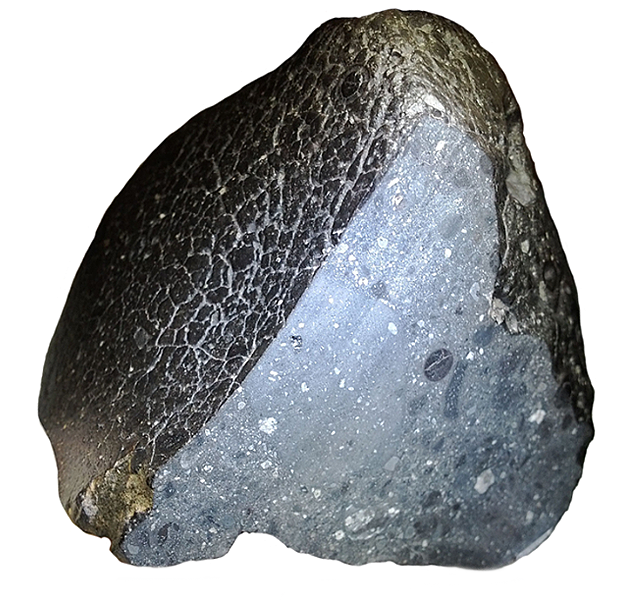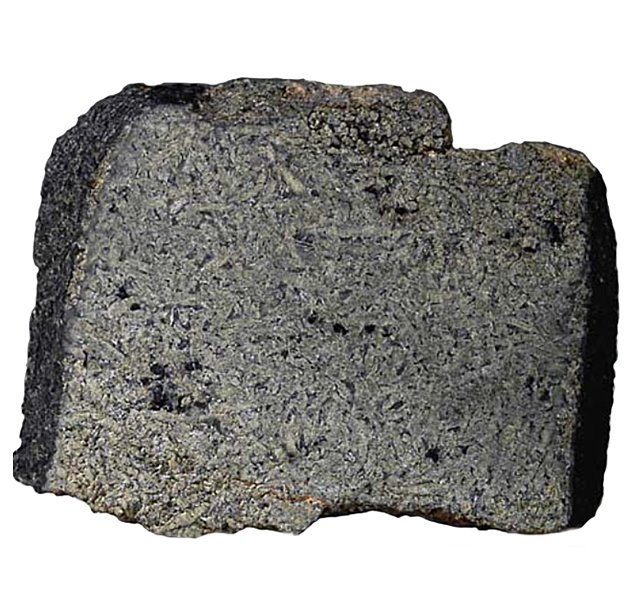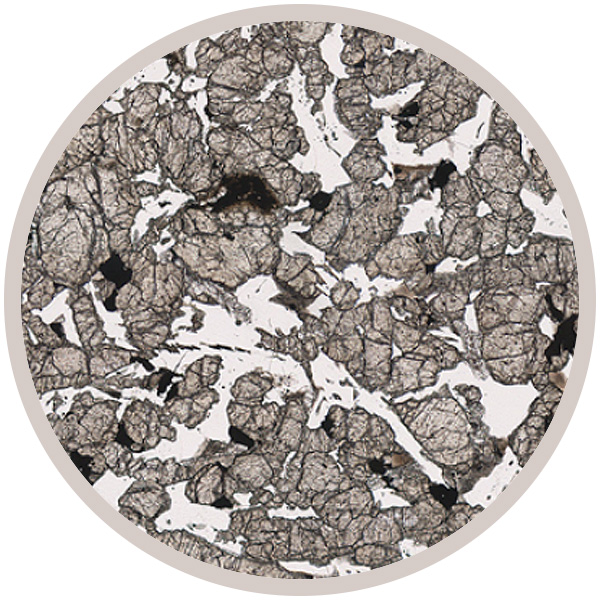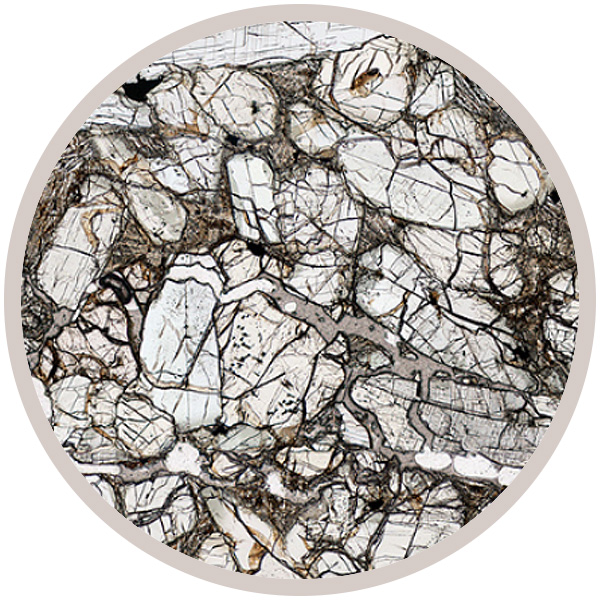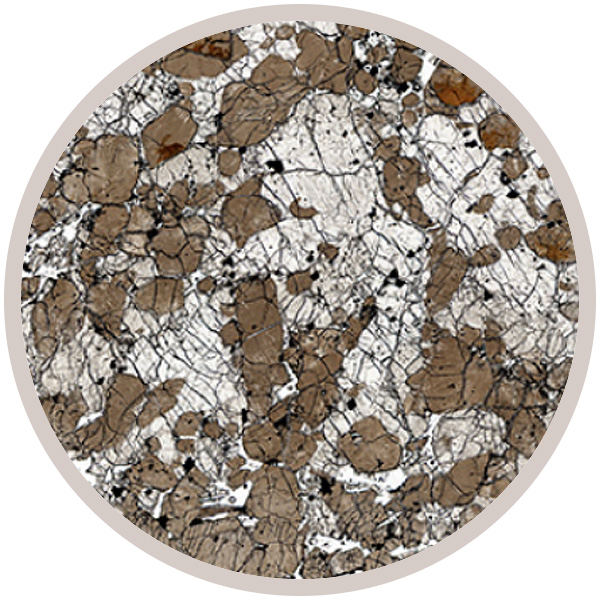
Fact sheet
This cumulate gabbroic rock (lherzolite) was found as a 483 g stone in the Allan Hills region of Antarctica. Isotopic techniques have dated it at 173±6 m.y. (Sm-Nd) and 185±11 m.y. (Rb-Sr). It has many similarities with another lherzolitic shergottite - LEW 88516 and both may have been ejected from Mars at the same time.
Only 5% of the outer surface of LEW 88516 still had a black fusion crust. The interior contains about 55% olivine, 35% pyroxene, 8% maskelynite (shock-melted plagioclase feldspar) and 2% opaque minerals. Grain size reaches 6 mm. Accessory amounts of ilmenite, chromite, whitlockite (Mg-rich apatite) and pyrrhotite are also present.
ALHA77005 appears to be more heavily shocked than other Martian meteorites and small patches of melt glass containing skeletal crystallites of olivine and chromite can be seen. The brown colour of the olivine may be due to shock-induced oxidation.
This description is based on the work of NASA scientist Charles Meyer - compiler of The Mars Meteorite Compendium.
This collection of meteorites includes Shergottites, Nakhlites and Chassignites (or SNC meteorites) which originate from the surface of the planet Mars.
They carry unique signals of the surface of the planet that allows scientists to study the composition and age of Martian rocks. The collection includes a sample of the famous ALH84001 meteorite, evidence from which was used in 1996 to begin the debate of 'life on Mars?'.

